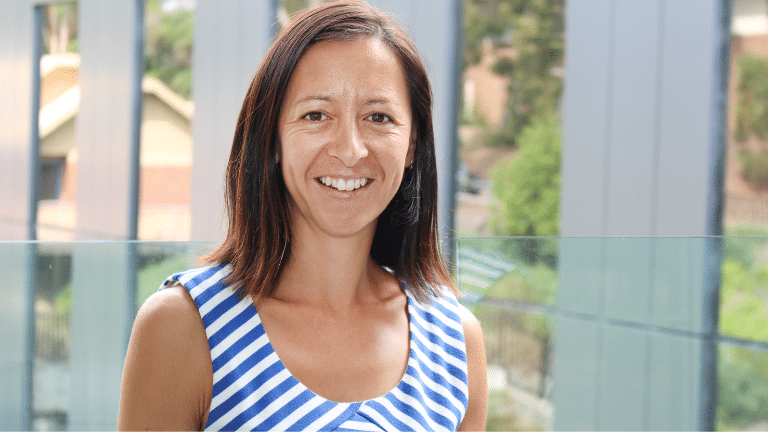
HMRI Early-Career Researcher of the Year for 2023, Dr Rachel Sutherland from HMRI’s Population Health program, is using a combination of behavioural science and technology to tackle Australia’s biggest health problems.

“My research seeks to reduce the considerable burden of chronic diseases such as cancer and cardiovascular disease on individuals, families, and the community,” Dr Sutherland said. “It does this through co-designing innovative technology-based interventions that integrate behavioural science to target leading risk factors for chronic disease – namely diet and physical activity – and working with government to identify how they can best be scaled up and implemented to benefit the community.”
As a Dietitian, Public Health Nutritionist, Health Promotion Program Manager and implementation research practitioner with a PhD in Behavioural Sciences, Dr Sutherland is uniquely qualified to make this multidisciplinary approach work. In previous years, she has worked on diet interventions including Australia’s largest population-wide child obesity prevention service known as Good for Kids. Good for Life (GFK.GFL). This school-based physical activity intervention targeted disadvantaged adolescents and was the first of its kind to succeed, which led to a slew of international awards.She then developed the first effective and scalable healthy lunchbox program called SWAP IT that was rolled out through an app called Audiri that is used in Australian schools.
The idea behind SWAP IT was simply to educate parents and students around better lunchbox choices, swapping high-sugar, high-fat snack foods for lower GI, less processed and healthier options at no extra cost. Dr Sutherland says, “More than 85% of school children take a packed lunch to school every day; however, packed inside are more than three servings of energy-dense, nutrition-poor snack foods. “Making one to two simple swaps every day in the lunchbox can have an enormous impact at a population level, both in terms of health, education and wellbeing. “I am very passionate about ensuring programs are delivered at scale, reach the communities that they would benefit most, and that research is translated and doesn’t just sit idle on the shelf.
“SWAP IT has now been embedded into the NSW Ministry of Health Live Life Well @ School program and is being implemented as usual health promotion practice across NSW,” she says.

Drink: Water and/or reduced fat plain milk
Recess: Vegetables or fruit + 1-2 everyday snacks
Veg & fruit break: Vegetables or fruit
Lunch” A meal made with everyday foods, such as a sandwich, wrap, salad, pasta or rice dish.
Find out more about SWAP IT: swapit.net.au
HMRI would like to acknowledge the Traditional Custodians of the land on which we work and live, the Awabakal and Worimi peoples, and pay our respects to Elders past and present. We recognise and respect their cultural heritage and beliefs and their continued connection to their land.
Hunter Medical Research Institute
We’re taking healthy further.
Locked Bag 1000
New Lambton
NSW, Australia, 2305


This site is protected by reCAPTCHA and the Google Privacy Policy and Terms of Service apply.
Copyright © 2024 Hunter Medical Research Institute | ABN: 27 081 436 919
Site by Marlin Communications
